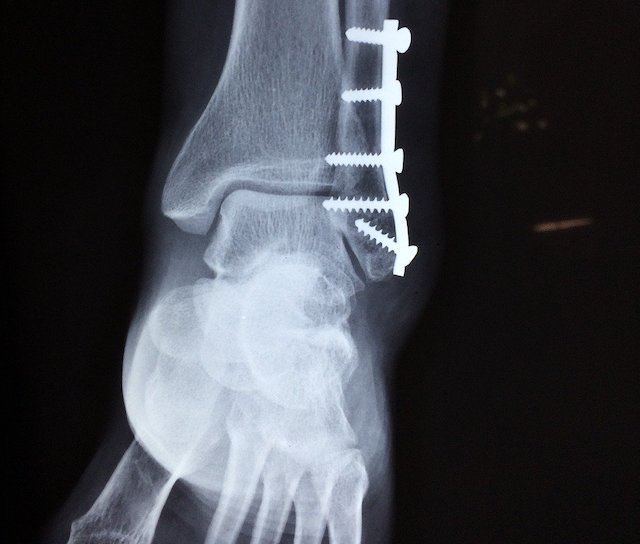
In a new study, researchers discovered a combination of two commonly available drugs could boost the body’s ability to heal bone fractures – accelerating bone formation and healing.
They found two existing medications can elevate the body’s own repair machinery, triggering the release of stem cells from the bone marrow.
They say the two drugs, currently used for bone marrow transplants and bladder control, could be used for different types of bone fractures, including to the spine, hip, and leg, to aid healing after surgery or injuries.
The research was conducted by a group of scientists from the Beaumont Research Institute in Royal Oak, Michigan and the Imperial College London in London, England.
The body repairs itself all the time. When bones break, they will heal, and this requires the activation of stem cells in the bone.
However, when the damage is severe, there are limits to what the body can do of its own accord.
Previous research has shown that when a person has a disease or an injury, the bone marrow, the spongy tissue within a bone, mobilizes different types of stem cells to help repair and regenerate tissue.
The new research suggests it may be possible to boost the body’s ability to repair itself and speed repair by using new drug combinations to put the bone marrow into a state of “red alert” and send specific kinds of stem cells into action.
In the study, the researchers used drugs to trigger the bone marrow to release mesenchymal stem cells, a type of adult stem cell that can turn into bone, and help repair bone fractures.
Their findings suggest it may be possible to repurpose Food and Drug Administration-approved drugs to enhance the way our own stem cells are able to respond to injury and surgery.
The team is also examining the potential to enhance the healing of other musculoskeletal tissues besides bone.
They hope that by using these existing medications to mobilize stem cells, they could potentially call up extra numbers of these stem cells, in order to boost the body’s own ability to mend itself and accelerate the repair process.
The lead author of the study is Kevin Baker, Ph.D.
The study is published in the journal npj Regenerative Medicine.
Copyright © 2020 Knowridge Science Report. All rights reserved.



